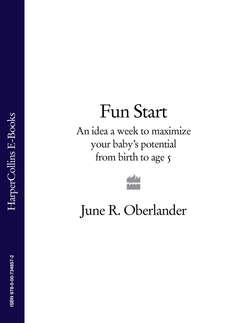Читать книгу Fun Start: An idea a week to maximize your baby’s potential from birth to age 5 - June Oberlander R. - Страница 47
Poking This activity develops
Оглавлениеeye-hand coordination
free choice exploration
enhances the sense of touch
an awareness of ‘rough’ and ‘soft’ textures
confidence
Obtain a small, smooth bottle cap. Make six holes in two polystyrene picnic plates by pressing the cap firmly on the plates. Be sure to press hard and twist the cap to make smooth holes in the plates. If the holes are ragged, use small sharp fingernail scissors to make the holes neat. Cut a large sheet of sandpaper the size of one plate and lay it inside one of the inverted plates so that the rough side faces the holes in that plate. Pack loose cotton, cotton balls or polystyrene on top of the smooth side of the sandpaper sheet. Place the other polystyrene plate facing down on top of the other plate. Staple or tape the two plates containing the sandpaper and cotton together.
Poke your index finger in each of the holes on the sandpaper side. This is the rough side. Turn the connected plates over and poke your index finger at random in the holes on that side. This side feels soft. Encourage the baby to use his index finger to poke it in the holes at random. Show him both sides of the plates and allow him to feel and explore both sides independently.
The baby may be reluctant to poke his finger in the holes. He may just look at it and let it be, and he may need some encouragement to poke his finger in the holes of the plate. If you have a Chinese Chequer board, the baby will probably enjoy poking his finger in the holes in it. It makes no difference if the baby chooses another finger for poking. Encouragement, praise and good voice inflection will serve to increase the baby’s interest. Use the words‘rough’ and ‘soft’as you talk to the baby. This will increase his understanding of these concepts.
